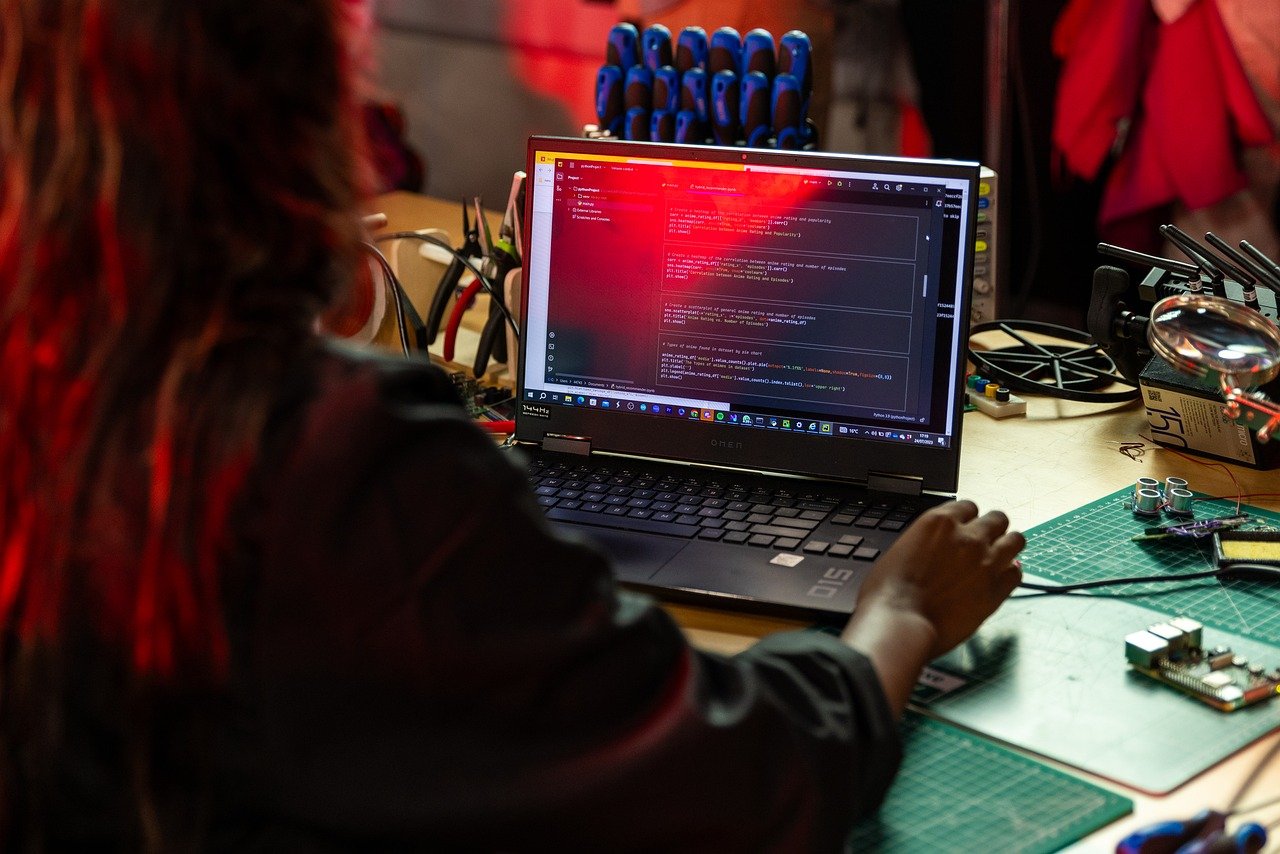The Role of Blockchain in Combating Counterfeit Goods
In today's world, where consumers are increasingly conscious about what they purchase, the presence of counterfeit goods has become a major concern. These fake products not only undermine the integrity of brands but also pose serious risks to consumer safety and well-being. Imagine buying a luxury handbag, only to discover it’s a cheap imitation—disappointing, right? This is where blockchain technology steps in as a formidable ally in the fight against counterfeiting.
Blockchain, with its unique features, offers a transparent and secure way to track the authenticity of products from their origin to the end consumer. By utilizing a decentralized digital ledger, businesses can ensure that every transaction is recorded and visible to all parties involved. This transparency is crucial in building trust between consumers and brands, as it allows customers to verify the authenticity of the products they purchase. In a market flooded with imitation goods, having this level of assurance can be a game-changer.
Moreover, the economic impact of counterfeit goods is staggering. According to estimates, the global trade in counterfeit and pirated goods amounts to nearly $500 billion annually. This not only affects the brands that invest heavily in research and development but also harms consumers who may unknowingly purchase substandard or dangerous products. With blockchain, we can create a system where authenticity is guaranteed, significantly reducing the prevalence of counterfeit goods in the market.
One of the most exciting aspects of blockchain technology is its potential to revolutionize supply chain management. By implementing blockchain, companies can track products at every stage of their journey, ensuring that they are genuine. This means that from the moment a product is created to the time it reaches the consumer, every step can be verified and recorded. Imagine being able to scan a QR code on your favorite product and instantly see its entire history—where it was made, who handled it, and how it got to you. This level of detail not only enhances consumer confidence but also enables brands to take swift action against counterfeiters.
In conclusion, blockchain technology presents a robust solution to the growing problem of counterfeit goods. By enhancing transparency, ensuring the integrity of product information, and automating processes through smart contracts, blockchain can significantly reduce the risk of counterfeit products entering the market. As we continue to explore the potential of this technology, it’s clear that its role in combating counterfeiting is not just a possibility, but a necessity for the future of commerce.
- What are counterfeit goods? Counterfeit goods are products that are made to look like genuine items but are actually fake. They can range from luxury items to everyday products.
- How does blockchain help in fighting counterfeiting? Blockchain provides a secure and transparent way to track the authenticity of products throughout the supply chain, making it difficult for counterfeit goods to enter the market.
- What are smart contracts? Smart contracts are automated agreements that execute when certain conditions are met, helping to streamline processes and ensure compliance in supply chains.
- Are there challenges in implementing blockchain? Yes, challenges include scalability issues, regulatory considerations, and the need for collaboration among industry players.

Understanding Counterfeit Goods
Counterfeit goods are not just a minor inconvenience; they represent a **serious threat** to both consumers and businesses. These products, often masquerading as legitimate items, can range from designer clothing and luxury watches to pharmaceuticals and electronics. The prevalence of counterfeit goods is staggering, with estimates suggesting that they account for a significant portion of global trade—around **$500 billion annually**. This figure is not just a statistic; it reflects the **economic impact** that counterfeit products have on industries, economies, and individual livelihoods.
To truly grasp the implications of counterfeit goods, it's essential to understand what they are. Counterfeit products are items that are **illegally produced** to imitate genuine products, usually with the intent to deceive consumers into believing they are purchasing authentic goods. The motivations behind counterfeiting are often financial, driven by the potential for high profits with relatively low risk. In many cases, these counterfeit goods are manufactured in **substandard conditions** and might not meet the safety or quality standards set for legitimate products. This can lead to dire consequences, especially in industries like pharmaceuticals, where counterfeit drugs can pose significant health risks.
The **economic ramifications** of counterfeit goods extend beyond just the immediate financial losses to businesses. They can also lead to job losses, decreased innovation, and a tarnished brand reputation. For instance, when consumers unknowingly purchase counterfeit products, they may lose trust in the brand altogether, which can result in reduced sales for legitimate businesses. In a world where brand loyalty is paramount, the stakes are incredibly high.
Moreover, the impact of counterfeit goods is not evenly distributed. Some industries are more vulnerable than others. For example, the luxury goods sector is often targeted due to the high profit margins associated with authentic products. However, the technology and pharmaceutical industries are also facing significant challenges. The following table illustrates the economic impact of counterfeit goods across various sectors:
| Industry | Estimated Loss (in billions) | Impact on Consumers |
|---|---|---|
| Luxury Goods | $30 | Loss of trust and brand integrity |
| Pharmaceuticals | $75 | Health risks and safety concerns |
| Electronics | $100 | Substandard quality and performance issues |
| Apparel | $40 | Loss of consumer confidence |
In summary, understanding counterfeit goods is crucial in today’s global market. They pose **significant risks** not only to consumers who may unknowingly purchase subpar products but also to businesses that suffer from lost revenue and damaged reputations. As we delve deeper into how blockchain technology can combat this issue, it's vital to keep in mind the broader implications of counterfeit goods on our economy and society.

Blockchain Technology Explained
Blockchain technology is revolutionizing how we think about data management and transaction verification. At its core, it is a decentralized digital ledger that records transactions across multiple computers, ensuring that the information is both transparent and secure. Imagine a public library where every book (or transaction) is visible to everyone, but no one can alter the content of any book once it is placed on the shelf. This analogy perfectly encapsulates how blockchain operates, fostering a sense of trust and reliability.
One of the standout features of blockchain is its decentralization. Unlike traditional databases that are controlled by a single entity, blockchain distributes data across a network of computers, known as nodes. This means that no single party has control over the entire database, which significantly reduces the risk of fraud and manipulation. Each transaction is verified by multiple nodes, creating a consensus before it is added to the chain. This process not only enhances security but also promotes transparency in supply chains, allowing consumers to trace the origins of products easily.
Another critical aspect of blockchain technology is its immutability. Once a transaction is recorded on the blockchain, it cannot be altered or deleted. This characteristic is crucial for maintaining the integrity of product information, especially when it comes to combating counterfeit goods. For instance, if a luxury brand uses blockchain to track its products, each item can be verified at every stage of its journey—right from manufacturing to the point of sale. This creates a reliable record that consumers can trust, as they can confirm the authenticity of the product with just a scan of a QR code or a similar technology.
Moreover, blockchain leverages smart contracts, which are self-executing contracts with the terms of the agreement directly written into code. These contracts automatically enforce and execute agreements when predetermined conditions are met. For example, in a supply chain scenario, a smart contract can ensure that a payment is released only when a product is delivered and verified as authentic. This not only streamlines processes but also minimizes the chances of counterfeit goods entering the market by ensuring strict compliance with the agreed terms.
In summary, blockchain technology offers a robust framework for enhancing transparency and trust in supply chains. With its decentralized nature, immutable records, and the power of smart contracts, it stands out as a formidable tool in the fight against counterfeit goods. As industries continue to explore its potential, we can expect to see transformative changes that will benefit both businesses and consumers alike.

Decentralization and Transparency
Decentralization is like the backbone of blockchain technology, and it plays a pivotal role in enhancing transparency within supply chains. Imagine a world where every transaction is logged on a public ledger that anyone can access. This is precisely what blockchain offers—a transparent view into the journey of a product from its origin to the consumer's hands. By distributing the data across a network of computers rather than storing it in a single location, blockchain minimizes the risk of manipulation. This is critical in combating counterfeit goods, as it allows all stakeholders to verify the authenticity of a product.
When a product is registered on the blockchain, it is accompanied by a unique identifier, such as a QR code or RFID tag. This identifier is linked to immutable records that detail every step of the product's journey. For instance, if you're purchasing a luxury handbag, you can scan the code to see its entire history—where it was manufactured, how it was transported, and even the conditions it was stored in. This level of detail not only builds trust with consumers but also holds manufacturers accountable for their products.
Furthermore, the transparency provided by blockchain can lead to a more ethical supply chain. Stakeholders, including consumers, suppliers, and regulatory bodies, can access the same information, which fosters a sense of collaboration and trust. This shared visibility is essential for industries plagued by counterfeit goods, such as pharmaceuticals, fashion, and electronics. It enables quick identification of discrepancies and potential fraud, allowing for immediate corrective actions.
To illustrate the impact of decentralization and transparency, consider the following table that outlines the benefits of blockchain in supply chain management:
| Benefit | Description |
|---|---|
| Enhanced Trust | Consumers can verify the authenticity of products, leading to increased confidence in their purchases. |
| Accountability | Manufacturers and suppliers are held accountable for their products, reducing the risk of fraud. |
| Faster Response | Quick identification of counterfeit products allows for timely action and mitigation of risks. |
| Cost Reduction | Streamlined processes reduce the costs associated with verifying product authenticity. |
In summary, decentralization and transparency are not just buzzwords; they are fundamental principles that empower blockchain technology to combat counterfeit goods effectively. By creating a more open and accountable supply chain, blockchain not only protects consumers but also supports legitimate businesses in thriving within a fair marketplace. As we move forward, the integration of these principles will be crucial in ensuring that consumers can trust the products they purchase.
- How does blockchain verify the authenticity of products? Blockchain uses a decentralized ledger to track every transaction and change in product status, making it easy to verify authenticity.
- Can blockchain be used in all industries? Yes, while its application may vary, blockchain has the potential to enhance transparency in various sectors, including pharmaceuticals, fashion, and electronics.
- What are the main challenges in implementing blockchain? Challenges include scalability, regulatory compliance, and the need for industry-wide collaboration.

Immutable Records
The concept of is one of the most revolutionary aspects of blockchain technology. Imagine a digital ledger where every entry is permanently etched in stone, unchangeable and transparent. This is what blockchain offers—a system where once data is recorded, it cannot be tampered with or altered. This characteristic is crucial in the fight against counterfeit goods, as it ensures the integrity of product information throughout the entire supply chain.
When a product is created, its details—such as origin, manufacturing date, and ownership—can be logged onto the blockchain. This information is timestamped and linked to the product's unique identifier. As the product moves through various stages of the supply chain, each transaction is recorded in real-time, creating a complete and verifiable history of the product. This not only helps in tracking the authenticity of the goods but also builds a trust layer among consumers and businesses alike.
To illustrate the importance of immutable records, consider the following example: Suppose a luxury handbag is sold to a consumer. The buyer wants assurance that the bag is genuine and not a counterfeit. With blockchain, the handbag's unique identifier can be scanned, revealing its entire history—from the materials used, to the factory it was made in, and even the retailer it was purchased from. If any discrepancies arise, they can be easily identified due to the unmodifiable nature of the records.
Moreover, immutable records can serve as an effective deterrent against fraud. Knowing that every transaction is permanently documented and can be audited at any time discourages malpractices within supply chains. This not only protects consumers but also reinforces the brand's reputation, as companies can confidently stand behind the authenticity of their products.
In summary, the power of immutable records in blockchain technology provides a robust framework for ensuring product authenticity, enhancing transparency, and ultimately reducing the prevalence of counterfeit goods in the market. As businesses increasingly adopt this technology, we can expect a significant shift in how we perceive and verify the authenticity of products.
- What are immutable records? Immutable records are data entries on a blockchain that cannot be altered or deleted once they are created.
- How do immutable records combat counterfeit goods? They provide a permanent and unchangeable history of a product, allowing for easy verification of authenticity.
- Can immutable records be audited? Yes, since every transaction is recorded on the blockchain, they can be easily audited for transparency and compliance.
- What industries can benefit from immutable records? Various industries, including fashion, pharmaceuticals, and electronics, can leverage immutable records to combat counterfeiting.

Smart Contracts
When we talk about , we’re diving into one of the most exciting aspects of blockchain technology. Imagine a digital contract that automatically executes when certain conditions are met—no lawyers, no intermediaries, just pure code. It’s like having a self-operating vending machine for agreements! These self-executing contracts are embedded with the terms of the agreement directly in the code, which ensures that all parties involved are held accountable without the need for trust.
In the fight against counterfeit goods, smart contracts play a pivotal role. They can automate the verification process at every step of the supply chain. For instance, when a product is manufactured, the smart contract can ensure that it meets specific quality standards before it even leaves the factory. If the product passes inspection, the contract automatically triggers the next step, such as shipping the item to the retailer. This eliminates any chance for counterfeit products to slip through the cracks.
Moreover, smart contracts enhance transparency and traceability in the supply chain. Each time a product changes hands—from manufacturer to distributor to retailer—a record is created on the blockchain. This allows anyone involved to verify the product's authenticity at any time. Imagine being a consumer who can scan a QR code on a luxury handbag and instantly see its entire history, from production to sale. This level of transparency not only builds consumer trust but also discourages counterfeiters who thrive in shadowy transactions.
However, it’s essential to understand that smart contracts are not a one-size-fits-all solution. They require a well-defined set of rules and conditions to function effectively. If the terms are vague or poorly constructed, the entire contract could fail, leading to disputes that the very technology was designed to avoid. Therefore, businesses must invest time and resources in drafting precise, clear conditions to ensure the smooth operation of smart contracts.
In summary, smart contracts are revolutionizing the way we think about agreements in the supply chain. They not only streamline processes but also provide a robust mechanism to combat counterfeit goods. By leveraging the power of automation and transparency, these contracts can significantly reduce the risks associated with fraudulent products, paving the way for a more secure marketplace.
- What are smart contracts? Smart contracts are self-executing contracts where the terms of the agreement are written into code on the blockchain.
- How do smart contracts help in combating counterfeit goods? They automate verification processes and ensure transparency in the supply chain, making it harder for counterfeit products to enter the market.
- Are smart contracts legally binding? Yes, in many jurisdictions, smart contracts can be legally binding, provided they meet the necessary legal requirements.
- What challenges do smart contracts face? Challenges include the need for clear terms, potential coding errors, and regulatory uncertainties that may affect their enforceability.

Case Studies of Blockchain in Action
When it comes to tackling the issue of counterfeit goods, blockchain technology has proven to be a game changer. Numerous companies across various industries have adopted this innovative technology to enhance their supply chain transparency and product authenticity. Let's take a closer look at some compelling case studies that highlight how blockchain is making a significant impact.
One of the most notable examples is De Beers, the renowned diamond company. They have implemented a blockchain solution called Tracr to track the provenance of their diamonds. By recording every transaction on the blockchain, De Beers ensures that each diamond's journey from mine to market is transparent and verifiable. This not only helps in assuring customers of the authenticity of their purchase but also combats the issue of conflict diamonds entering the market. Imagine buying a diamond with the confidence that you know its entire history—this is the power of blockchain!
Another fascinating case is that of Walmart, which has partnered with IBM to utilize blockchain for tracking food products. In a pilot project, Walmart was able to trace the origin of mangoes from farm to store in just a few seconds, a process that previously took days or even weeks. This swift traceability not only enhances food safety but also helps in identifying counterfeit food products, thereby protecting consumers from potential health risks. The ability to pinpoint the source of any contamination quickly can save lives, making this application of blockchain incredibly valuable.
Luxury brands are also leveraging blockchain technology to fight counterfeiting. For instance, Louis Vuitton has launched a blockchain initiative that allows customers to verify the authenticity of their luxury goods. Each product is assigned a unique digital identity on the blockchain, enabling consumers to confirm its origin and authenticity before making a purchase. This not only protects the brand's reputation but also provides consumers with peace of mind, ensuring they are investing in genuine products.
Furthermore, the pharmaceutical industry is also seeing the benefits of blockchain. Companies like Modum are using blockchain to track the temperature and conditions of pharmaceutical products during transportation. By ensuring that medications are kept at the correct temperature, blockchain helps prevent counterfeit drugs from entering the supply chain. This is crucial because counterfeit medications can have dire consequences for patient health, and blockchain technology is stepping up to secure the integrity of these critical products.
As we can see from these examples, the implementation of blockchain technology in various sectors is not just a theoretical concept but a practical solution with real-world applications. The transparency, traceability, and security that blockchain offers are invaluable in the fight against counterfeit goods. Companies are not only protecting their brand integrity but also fostering trust with consumers, which is vital in today’s market.
These case studies illustrate how blockchain is revolutionizing supply chains and providing innovative solutions to longstanding problems, particularly in the realm of counterfeiting. As more businesses recognize the potential of this technology, we can expect to see an even broader adoption that will ultimately benefit consumers and industries alike.
- What is blockchain technology?
Blockchain is a decentralized digital ledger that records transactions across multiple computers, ensuring that the recorded data is secure and immutable. - How does blockchain prevent counterfeiting?
Blockchain enhances transparency and traceability in supply chains, allowing consumers and businesses to verify the authenticity of products. - What are smart contracts?
Smart contracts are self-executing contracts with the terms of the agreement directly written into code, automating and enforcing agreements in the supply chain. - Are there challenges in implementing blockchain?
Yes, challenges include scalability issues, regulatory hurdles, and the need for collaboration across industries.

Challenges in Implementation
While the potential of blockchain technology in combating counterfeit goods is immense, several challenges hinder its widespread adoption. First and foremost, the issue of scalability looms large. Blockchain systems, especially those that are public, can face significant limitations in processing speed and transaction throughput. Imagine trying to fit a large crowd into a small room; the more people you try to squeeze in, the more chaos ensues. Similarly, as the number of transactions increases, the system can become bogged down, making it less effective for real-time tracking of products. This is particularly critical in industries like fashion or electronics, where the speed of supply chains is paramount.
Next, we have the regulatory considerations. The legal landscape surrounding blockchain is still evolving, and navigating this maze can be daunting. Different countries have varying regulations regarding data privacy, consumer protection, and digital currencies. It’s like trying to play a game with different rules depending on where you are; it complicates the implementation of a universal solution. For companies looking to adopt blockchain, understanding these regulations is essential to avoid potential legal pitfalls.
Moreover, industry collaboration is crucial for the successful deployment of blockchain solutions. The technology works best when multiple parties within the supply chain are involved. However, getting competitors to cooperate can feel like herding cats. Each entity may have its own interests and priorities, making it challenging to establish a unified platform that everyone can trust and utilize. Without collaboration, the benefits of blockchain can be significantly diminished.
To add to these challenges, there is also the need for education and awareness. Many businesses, especially small and medium-sized enterprises, may not fully understand how blockchain works or how it can benefit them. This lack of knowledge can lead to skepticism and reluctance to adopt new technologies. Imagine trying to convince someone to switch to a new smartphone without them ever having seen one in action; it’s a tough sell. Therefore, educating stakeholders about blockchain’s advantages is essential for overcoming resistance.
In conclusion, while blockchain technology holds promise in the fight against counterfeit goods, addressing these challenges is crucial for its effective implementation. Companies must work together, navigate regulatory hurdles, and invest in education to unlock the full potential of this revolutionary technology.
- What is blockchain technology?
Blockchain is a decentralized digital ledger that records transactions across multiple computers, ensuring that the data is secure and transparent.
- How does blockchain help in combating counterfeit goods?
Blockchain enhances transparency and traceability in supply chains, allowing consumers and businesses to verify the authenticity of products.
- What are the main challenges in implementing blockchain?
The primary challenges include scalability issues, regulatory considerations, the need for industry collaboration, and a lack of education about the technology.
- Are there any successful case studies of blockchain in action?
Yes, several companies across various industries have successfully implemented blockchain solutions to combat counterfeiting, demonstrating its effectiveness.

Scalability Issues
When we talk about blockchain technology, one of the first things that come to mind is its revolutionary potential. However, like any technology, it has its share of challenges, and one of the most significant hurdles is scalability. Imagine trying to fit a large puzzle piece into a tiny box—this is somewhat akin to the scalability issues faced by blockchain systems today. As more transactions are added to the blockchain, the system can become congested, leading to slower processing times and increased costs.
The scalability problem primarily stems from the way blockchain networks are structured. Most blockchain networks, especially those using a Proof of Work consensus mechanism, require substantial computational power to validate transactions. This process can lead to bottlenecks, particularly during peak usage times. For instance, Bitcoin, one of the most recognized blockchains, can handle only about 7 transactions per second compared to traditional payment systems like Visa, which can process over 24,000 transactions per second. This discrepancy highlights a significant challenge for blockchain in handling large volumes of transactions efficiently.
Moreover, the decentralized nature of blockchain, while a strength in many respects, can also contribute to its scalability issues. Each node in the network must maintain a copy of the entire blockchain, which can lead to increased storage requirements and slower transaction times as the network grows. To illustrate this point, consider the following table:
| Blockchain | Transactions per Second | Average Confirmation Time |
|---|---|---|
| Bitcoin | 7 | 10 minutes |
| Ethereum | 30 | 15 seconds |
| Visa | 24,000+ | 1.5 seconds |
As you can see, the gap between blockchain networks and traditional systems is quite pronounced. This raises an important question: how can we overcome these scalability challenges? Some solutions are already in the works, including the development of Layer 2 solutions like the Lightning Network for Bitcoin and various sharding techniques for Ethereum. These approaches aim to alleviate congestion by enabling off-chain transactions or dividing the blockchain into smaller, more manageable segments.
However, these solutions are not without their own issues. For instance, while Layer 2 solutions can enhance speed, they may introduce new complexities regarding security and user experience. Thus, it’s a balancing act between speed, security, and decentralization—a trifecta that is challenging to achieve. As the demand for blockchain technology increases, especially in combating counterfeit goods, addressing these scalability issues will be paramount to its success.
In conclusion, while scalability remains a significant challenge for blockchain technology, ongoing research and innovation in this area hold promise. By developing more efficient consensus mechanisms and exploring new architectural designs, the blockchain community can pave the way for a future where decentralized technologies can operate seamlessly at scale, making them a viable solution for various industries, including the fight against counterfeit goods.

Regulatory Considerations
When it comes to implementing blockchain technology in the fight against counterfeit goods, navigating the regulatory landscape is a critical hurdle that cannot be overlooked. The complexity of laws and regulations across different jurisdictions can make it challenging for businesses to adopt blockchain solutions effectively. In many cases, these regulations are not yet fully established, leaving companies in a gray area where they must tread carefully to avoid legal pitfalls.
One of the main concerns is that blockchain operates on a decentralized model, which can clash with existing regulatory frameworks designed for centralized systems. For instance, regulations around data privacy, security, and consumer protection vary significantly from one country to another. Companies must ensure that their blockchain implementations comply with local laws, which often requires a deep understanding of both the technology and the regulatory requirements. This can lead to increased costs and extended timelines for deployment.
Moreover, the lack of standardized guidelines for blockchain usage in supply chains can create barriers to entry for smaller businesses. Without clear regulations, smaller companies may hesitate to invest in blockchain technology, fearing that they might not meet compliance standards or that their investments could be rendered obsolete by future regulatory changes.
To illustrate the impact of regulatory considerations, let’s look at some key areas where regulations play a significant role:
- Data Privacy: Regulations like the General Data Protection Regulation (GDPR) in Europe impose strict rules on how personal data is collected, stored, and shared. Blockchain’s immutable nature can complicate compliance, as it makes data deletion challenging.
- Consumer Protection: Authorities are concerned about ensuring that consumers are protected from counterfeit goods. Regulations may require businesses to provide proof of authenticity, which blockchain can help with, but the legal framework must support this.
- Intellectual Property: Protecting intellectual property rights is another critical area where blockchain can help. However, the legal implications of using blockchain for IP rights management are still being explored, necessitating clear guidelines.
Ultimately, for blockchain to be effectively utilized in combating counterfeit goods, there needs to be a concerted effort among industry stakeholders, regulators, and technology providers to create a cohesive regulatory framework. This collaboration could lead to the development of best practices that not only foster innovation but also ensure that consumer safety and trust remain paramount.
As the technology evolves, so too must the regulations that govern it. Stakeholders must engage in ongoing dialogue to address emerging challenges and to keep pace with the rapid advancements in blockchain technology. This proactive approach can pave the way for a more robust and effective use of blockchain in the fight against counterfeit goods.
- What are the main regulatory challenges for blockchain technology? The main challenges include data privacy laws, consumer protection regulations, and the need for clear guidelines on the use of blockchain in various industries.
- How can businesses ensure compliance with blockchain regulations? Businesses should stay informed about local and international regulations, seek legal counsel, and consider working with industry groups to advocate for clear guidelines.
- Is blockchain technology fully regulated? No, blockchain technology is still in a state of flux regarding regulations, and many jurisdictions have yet to establish comprehensive legal frameworks.
Frequently Asked Questions
- What are counterfeit goods?
Counterfeit goods are products that are made to look like legitimate items but are actually fake. They can range from luxury items like designer handbags to everyday products like electronics and pharmaceuticals. These goods not only deceive consumers but also pose significant risks to health and safety.
- How does blockchain technology help combat counterfeit goods?
Blockchain technology enhances transparency and trust within supply chains by providing a decentralized digital ledger that records every transaction. This means that every step a product takes from production to sale can be tracked, making it much harder for counterfeit goods to slip through the cracks.
- What are the key features of blockchain that assist in supply chain management?
The key features of blockchain include decentralization, transparency, immutability, and smart contracts. Decentralization means no single entity controls the data, ensuring that all parties can verify transactions. Transparency allows all stakeholders to see the same information, while immutability ensures that once data is recorded, it cannot be changed. Smart contracts automate processes, ensuring compliance and reducing human error.
- Can you provide examples of companies using blockchain to fight counterfeiting?
Yes! Several companies have successfully implemented blockchain solutions. For instance, luxury brands like LVMH use blockchain to verify the authenticity of their products. Similarly, companies in the pharmaceutical industry are using blockchain to track drugs from manufacturers to pharmacies, ensuring that consumers receive genuine medications.
- What challenges does blockchain face in combating counterfeit goods?
Despite its potential, blockchain faces several challenges, including scalability issues, regulatory hurdles, and the need for industry collaboration. Scalability is a concern because as the number of transactions increases, the system must be able to handle the load without slowing down. Regulatory challenges arise as legal frameworks around blockchain are still evolving, and collaboration among various stakeholders is essential for widespread adoption.
- What are smart contracts, and how do they work in this context?
Smart contracts are self-executing contracts with the terms of the agreement directly written into code. In the context of combating counterfeit goods, they automate and enforce compliance in the supply chain. For example, a smart contract can trigger a payment only when a product's authenticity is verified, ensuring that only legitimate goods enter the market.
- How can consumers protect themselves from counterfeit products?
Consumers can take several steps to protect themselves, such as purchasing from reputable retailers, checking for authentication labels, and using apps that leverage blockchain technology to verify product authenticity. Staying informed about the brands they buy and being cautious of deals that seem too good to be true can also help.



















